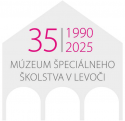Valentin Haüy
The greatest figure in the history of care for the visually impaired, a member of the French generation of encyclopedists, educator and philanthropist of the blind.
The biggest impact on Valentin Haüy was made by Denis Diderot and his famous work “Letter about the blind for the edification of the sighted” (1749). Diderot was particularly interested by the character of a blind liquor producer in Poiseaux, who he personally knew, but also gifted and blind musician Melanie de Salignac, or blind professor of mathematics at Cambridge University Nicholas Saunderson, with who he consulted a range of issues related to blindness and he was interested about the way of mathematical writing and geometric graphic of the blind. While Diderot in the matters of education of the blind remains as a philosopher only in the theoretical field, Valentin Haüy is credited with the full realization of their intellectual and physical needs.
Haüy was convinced that the blind need a continuing education with the purposely defined aims and the content of education. This led Haüy to the establishment of the first institute for the blind in Paris in 1784, with three main educations: literature, music teaching and vocational training.
Haüy, however, became well-known even outside of France, particularly in Tsarist Russia. On the way to St. Petersburg he founded the Institute in Berlin (1806) and a year later in 1807, the Institute in St. Petersburg, where he stayed for 11 years. After his return he lived with his brother Rene and unnoticed and in complete isolation from social life – until his death.


